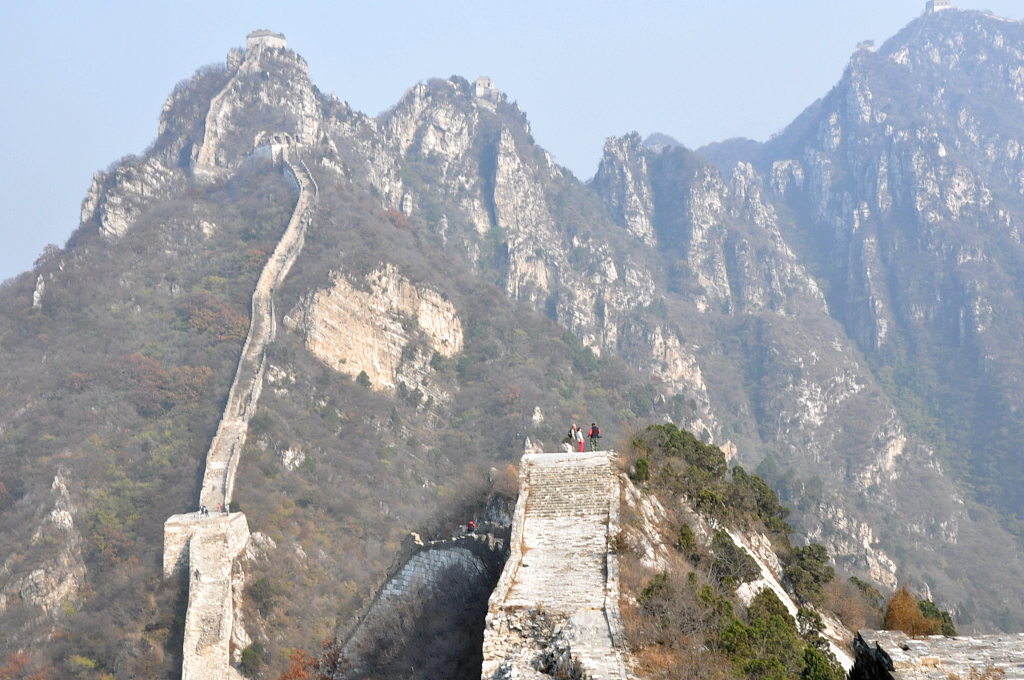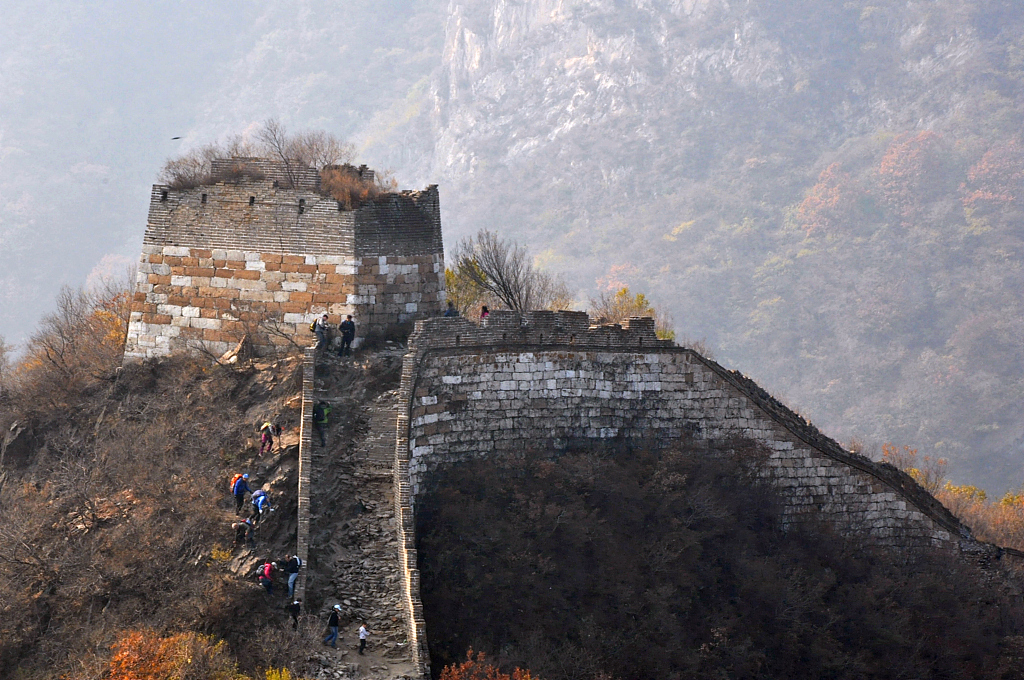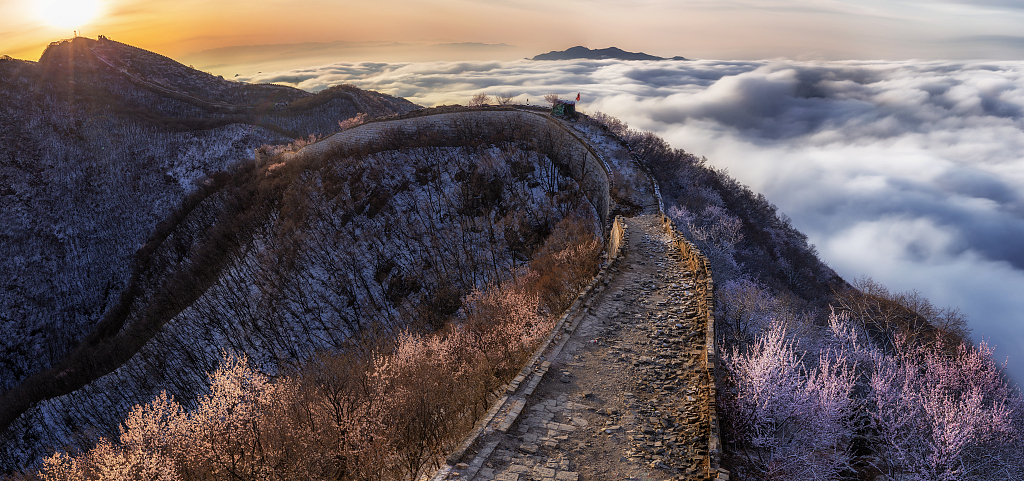
Beijing starts to renovate the eastern part of the Jiankou Great Wall. /VCG
Beijing starts to renovate the eastern part of the Jiankou Great Wall. /VCG
Chinese capital city Beijing has started to renovate the eastern part of the Jiankou Great Wall, according to the Huairou District government.
Located in the northern Huairou District, the Jiankou section is one of the steepest and most dangerous parts of the Great Wall. Enjoying great popularity among mountain hikers, it is dubbed "the wild Great Wall."
Local authorities said that the restoration project, which started on April 17, is expected to complete by the end of this year.

The Jiankou section is one of the steepest and most dangerous parts of the Great Wall, China. /VCG
The Jiankou section is one of the steepest and most dangerous parts of the Great Wall, China. /VCG
The length of the renovation on the eastern part is about 1,094 meters, including eight beacon towers and other popular attractions.
"The renovation aims to eliminate potential safety hazards, while preserving the unique landscape and characteristics of the Wall," said Zhang Tong, director of the cultural relics office of Huairou District.
According to Zhang, the office has conducted aerial photographing and 3D modeling of the parts to be repaired as part of preparations for the restoration project.

The Jiankou section is among the less protected parts of China's Great Wall far from the Chinese capital city Beijing. /VCG
The Jiankou section is among the less protected parts of China's Great Wall far from the Chinese capital city Beijing. /VCG
Stretching a total length of 7,952 meters, the Jiankou Great Wall was initially built during the Tang Dynasty (618-907) and it was restored during the Ming Dynasty (1368-1644).
The section was damaged over time as it was among the less protected psrts of the Great Wall far from the capital city and once vandalized by some developers and tourists.
Beijing has been making rescue efforts for "the wild Great Wall" since 2016, with a 2,232-meter-long wall section and 11 towers restored so far.
Bold cliffs pose great challenges to repair
"In this case, the distance that allows vehicles and mules to transport the materials and tools is relatively short," said Cheng Yongmao, engineering consultant of the renovation project, adding, "and they must be carried by the workers themselves most of the time."

Workers have to carry the building materials on their shoulders up for the restoration of the Great Wall in China. /Xinhua
Workers have to carry the building materials on their shoulders up for the restoration of the Great Wall in China. /Xinhua
According to Cheng, the complicated and changeable topography of the eastern section pose great challenges to the archaeological and cleaning works on early stage.
Additionally, the parts to be repaired involve many abrupt slopes and bold cliffs, making it harder for future restoration.
The migrant workers who arrived in Beijing to participate in the renovation can only start their work after 14 days of medical quarantine to ensure their health and safety during the COVID-19 pandemic.

A view of the Jiankou Great Wall in early Spring. /VCG
A view of the Jiankou Great Wall in early Spring. /VCG
Also, all staff have to receive training to strengthen their repair skills of ancient buildings in advance apart from the anti-epidemic training.
The Great Wall, which consists of many interconnected walls, is a UNESCO World Heritage Site and one of China's most iconic landmarks.
The authorities planned to comprehensively protect and develop the Great Wall Cultural Belt, covering a total area of 4,929.29 square kilometers, including both heritage protection and ecological conservation.